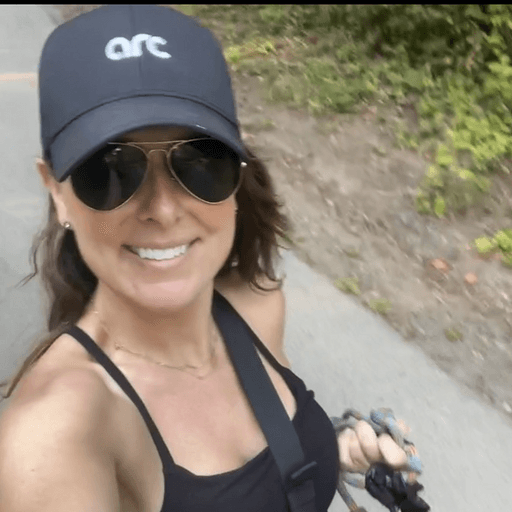Finding Success via Support as Arc’s First Product Intern
How Stanford’s Mayfield Fellows Program led me to bolster my entrepreneurial and product sense at a Series A FinTech startup
| Spencer Chemtob, Arc Product Management Intern, Summer '22
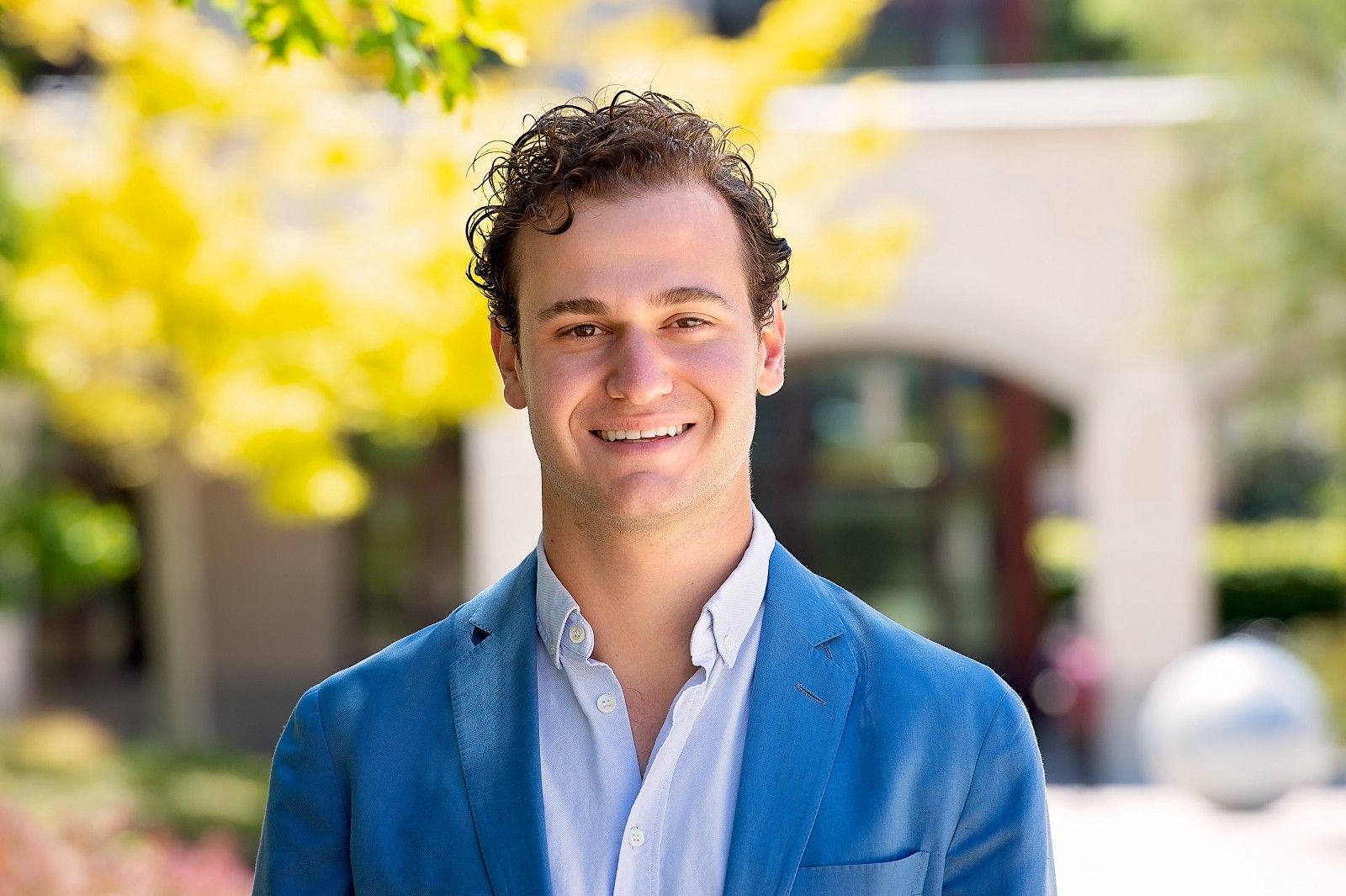
I expected a lot of change returning to Stanford’s campus for my junior year after not seeing the campus for a year and a half. The change was there: masks in classrooms, awkward hellos, “Did you gap or flex or take classes?” Everyone took their own paths to get a jump on careers or to keep moving forward in their academics. It was also exciting, but hard to see friends not return to campus to start their own ventures.
A self-fulfilling work-study fellowship
What didn’t change when I returned to Stanford was the classic recruiting cycle for jobs in either big tech, consulting, or banking. Within the first three weeks of school, I would often see my roommate help case with other students for their upcoming consulting interviews. Getting nervous about my upcoming summer and post-grad career opportunities, I had to reflect on what opportunities to pursue. As the deadlines approached for traditional summer analyst roles, I realized that the right environment for me to both expand on my work in startup ecosystems and implement my studies as a Product Design (PD) major at Stanford would be an early-stage startup.
So as I came back in September of 2021, I waited patiently for an application deadline. Not one at Insight, Goldman, or Bain, but the deadline at the Mayfield Fellows Program (MFP): a work-study fellowship where 12 students go on to work at early-stage ventures with supporting coursework designed by Ann Miura-Ko and Tom Byers. Through coursework in the Spring and Fall, the MFP cohort dives into what makes a great startup, or the early signs of it. While Stanford students often think that MFP places them at a startup for the summer, the opposite is true. The curriculum is self-fulfilling as the fellows individually seek out startups that represent their learnings from MFP’s coursework. While each Mayfield Fellow enters the job search solo, we collectively lean on learnings and share notes around key indicators of startup success, including but not limited to product-market fit, values alignment, and venture scalability.
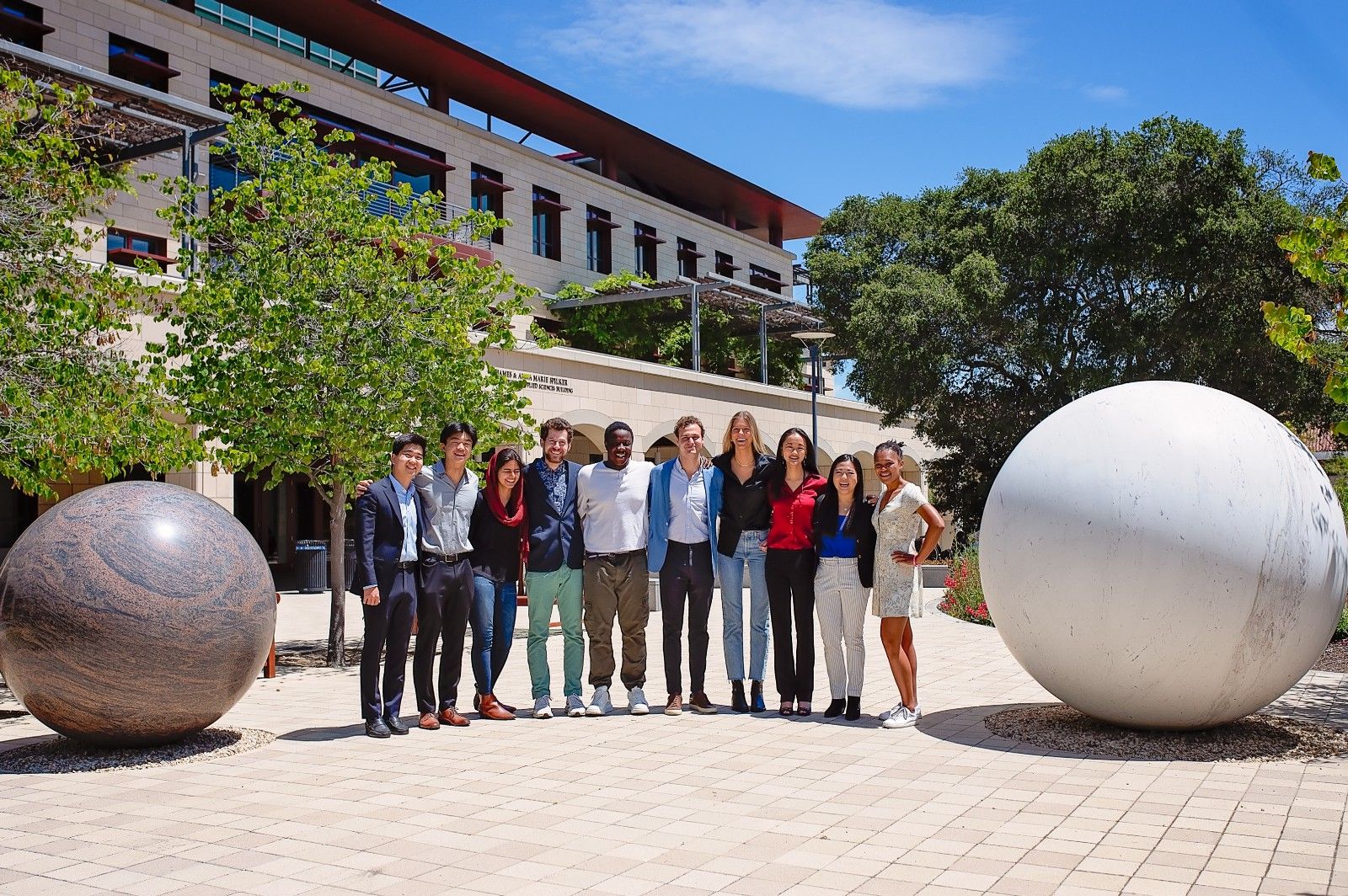 The Mayfield Fellows Class of 2022
The Mayfield Fellows Class of 2022
A framework for finding fit in the job search process
I personally built a framework for my Mayfield job search process that I will certainly use in future settings: Form, Function, and People.
What is the form of the startup? What industry does the startup operate in, how many employees are there, and what type of disruptive space are they entering? After my work at STATION F, the largest startup campus in the world, I was inspired by platform businesses. One that provides a suite of resources to push builders to the next stage of their ventures.
What function or role would I seek out? While Stanford’s Product Design program doesn’t instruct us how to build perfect screens on Figma or become incredible sand casters, it informs a design sense focused on diving into the user experience and learning to ask the right questions. Leveraging my studies, I wanted to find a role that would allow me to be a resource for shaping the strategy and design of the product.
Who are the people behind this venture? After hearing a lecture in one of my PD classes from Sarah Smith (an investor and previously at Facebook & Quora), I learned that it’s not just who the founders are and their prior experiences, but their care for building a people-centered business. In other words, the first few hires at a startup are the most important because, yes, it reflects the ~culture~ from the get go, but more importantly establishes the company’s scalability. Sarah teaches that a venture can be incredibly scalable, but only if the people are willing to build a culture that scales with it. Through E140A (MFP’s first class) and Sarah’s lecture, I made it the utmost priority to search for a company that was willing to define itself through its people.
The implications of an unspoken culture and its impact on company productivity
After interviewing at startups through my spring quarter, I was thrilled to join Arc as a Product Management Intern.
The first thing I noticed when I started the role was an unspoken culture of walking. One-on-ones were often spent walking down long SoMa blocks figuring out what the next few days were going to look like at the company and offering support. During these walks, I noticed that the choices we made, deciding which routes to take to Sightglass Coffee or who would walk Zoe, Gustav’s dog, were made together.
At Arc, this team-based decision process transcends from walks into the workplace: how do we price this product or who could take on the next project that would make customers’ data even more secure. These walks embodied a needed culture of trust at such a young company. Given the general risks associated with startups, and especially since the market was unraveling and rates were increasing this past summer, I was so grateful to join a company that trusted me to walk with them through the ups and downs of building a startup.
At Arc, this team-based decision process transcends from walks into the workplace: how do we price this product or who could take on the next project that would make customers’ data even more secure.
These walks couldn’t happen without an emphasis on in-person work. Given that Arc is in-person-first and remote friendly, I quickly noticed an ownership mentality on my first day in the office. I was seated between Nick, the Co-Founder and President of Arc, and the Founding Principal Engineer, Emre. From completely different work experiences (Nick from PE and Emre from LinkedIn) I noticed that their seasoned careers wouldn’t stop them from approaching the hardest of problems. While eagerness to build and make impact is often represented by newer hires or soon-to-be grads (i.e. interns), I was often playing games of catch up with Emre — sending out UI screens as he cranked out lines of code. On walks with Don and Nick, I was encouraged to be the student: diving into their expertise in capital markets and learning step-by-step the ins and outs of the venture world as they wrapped up their $20M Series A raise. And on my calls with Bobby, Arc’s new Head of Design, I learned multitudes on how to design a product defined by balancing decades of pre-existing trust with tech-based finance solutions and creating an intuitive experience for our customers.
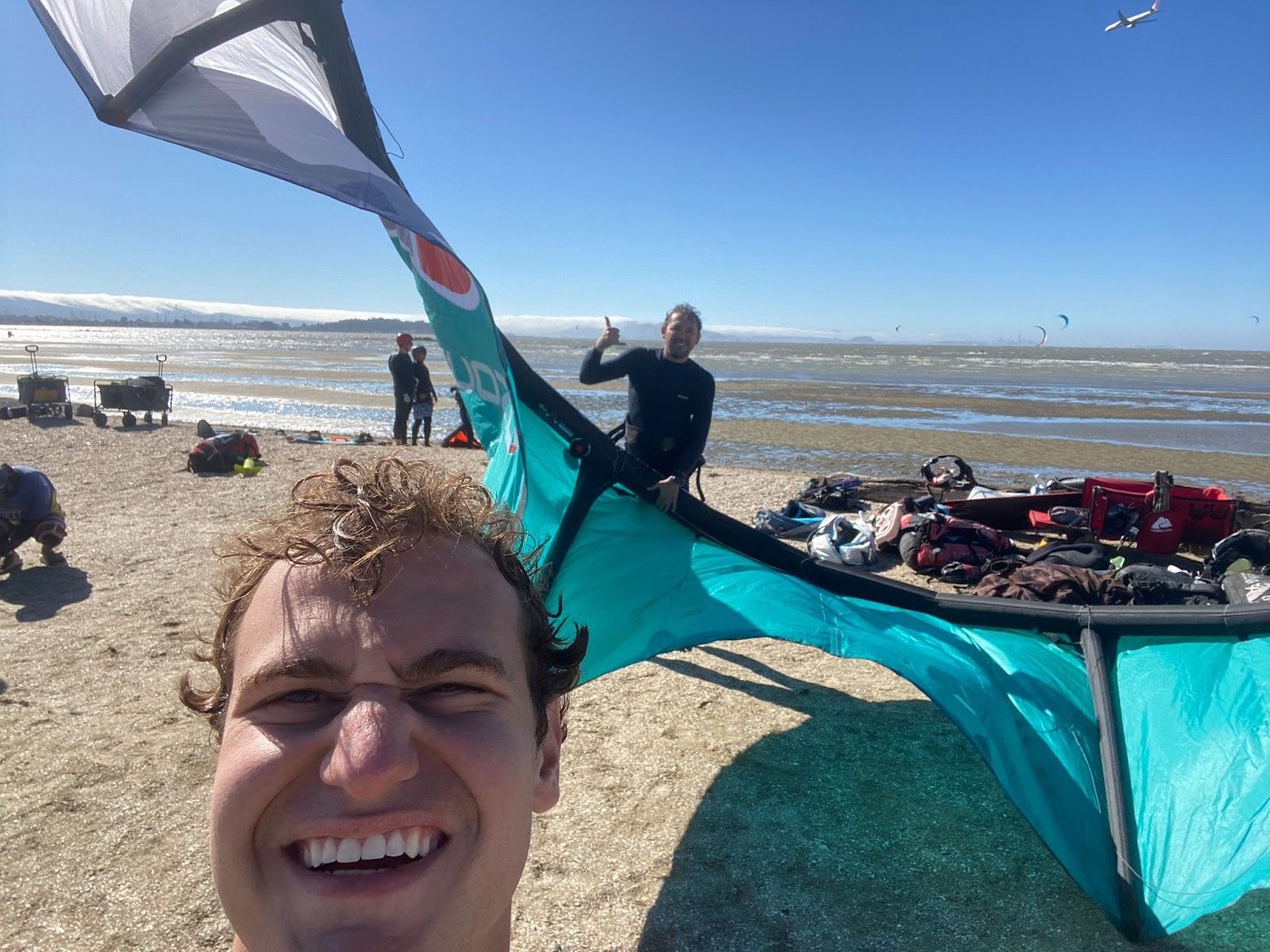
Kitesurfing with Emre at 3rd Ave. You can see SF in the background!
Finding personal growth through internal support and resources
The Arc team was kind enough to extend themselves as sources of upskilling within my 10-week internship. If I wanted to learn more about the core metrics that defined a venture-backed vs. bootstrapped startup, the credit team was more than willing to give me the resources and ramp me up to the point where I could notice discrepancies in a financial model. Or if I wanted to refine my funnel-analysis to price the product I was working on, I was able to grab time with Gustav and start writing SQL queries in no time. Given the always-adapting nature of a startup, I expected the Arc team to redefine how I could support product on a near regular basis. Instead, I found that check-ins with the team allowed me to extend myself into positions where I was needed and where all the necessary resources to execute well in that position were set in place.
Given that Nick and I were the only two people on the product “team” (I prefer the word duo… but imagine that will change soon as the company grows), each morning we would attend the engineering standups. I noticed that these standups were run in a way that fostered collective growth rather than a form that traditionally promotes internal competition within a tech company. Instead of saying, “Here’s what I did yesterday, and here’s what I will do today,” Arc’s engineering team framed the problems to call-in each other’s teammates. For example, standup reports were often given as questions: “This is the problem I am trying to solve, and here is how I have approached it but I wanted to check if there was an approach that I was missing?” From there, teammates with familiarity of the engineering problem would give counsel and those without would encourage the builder to further define why they were solving the problem. Early on at my Arc internship, I noticed myself feeling more willing to push to ask for advice from my fellow engineers than needing to prove that I was outputting high levels of work. From this willingness to ask for advice, I then felt even more confident in what I was building and knew that the team understood the need as well. In turn, this supportive culture promotes a higher level of work than a competitive one.
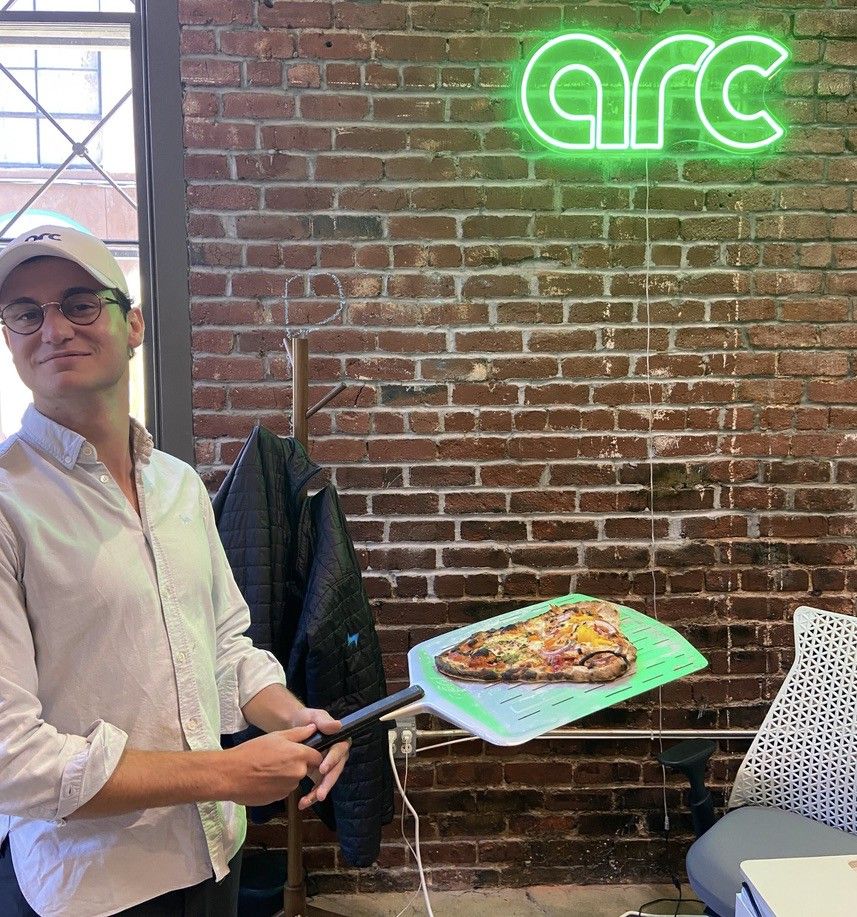
Making pizza during my first week at Arc
What was most special about my time at Arc was the feeling of building together and growing each other’s mindsets.
I quickly learned that product roles are neither prescriptive nor well defined. While prepping for interviews, someone suggested that I ask, “What does success look like in this role?” By the end of my PM internship at Arc, I felt that I had a general understanding of what success “looked like”: from lo-fi to hi-fi wireframes on Figma, detailed to rough PRDs, and generating internal buy-in to product features to improve company-wide workflow. What I didn’t expect to learn was what success feels like in a Product role and as an intern. There is a common misconception that interns aren’t expected to produce in our 10-week stints. While there are parts of this mentality that may hold true, it is only a limiting one or a fixed-mindset. What was most special about my time at Arc was the feeling of building together and growing each other’s mindsets. I never expected veteran engineers to call me into decision points, but as a product duo, Nick and I needed to show up for them. Success as an intern felt like coworkers looking beyond your age and relying on you to have an answer. And if you don’t have an answer that’s OK. You both can take a walk together and expose a path towards finding the right one.
For the latest on Arc’s job opportunities, you can find their career page here.
A special thanks to the entire Arc Team, the MFP/STVP team, and ‘22 cohort.
